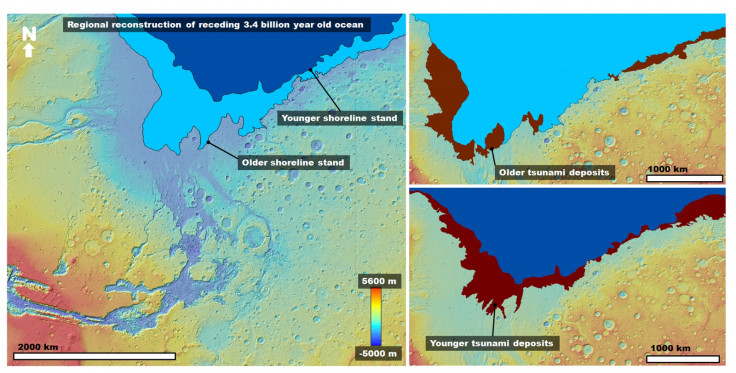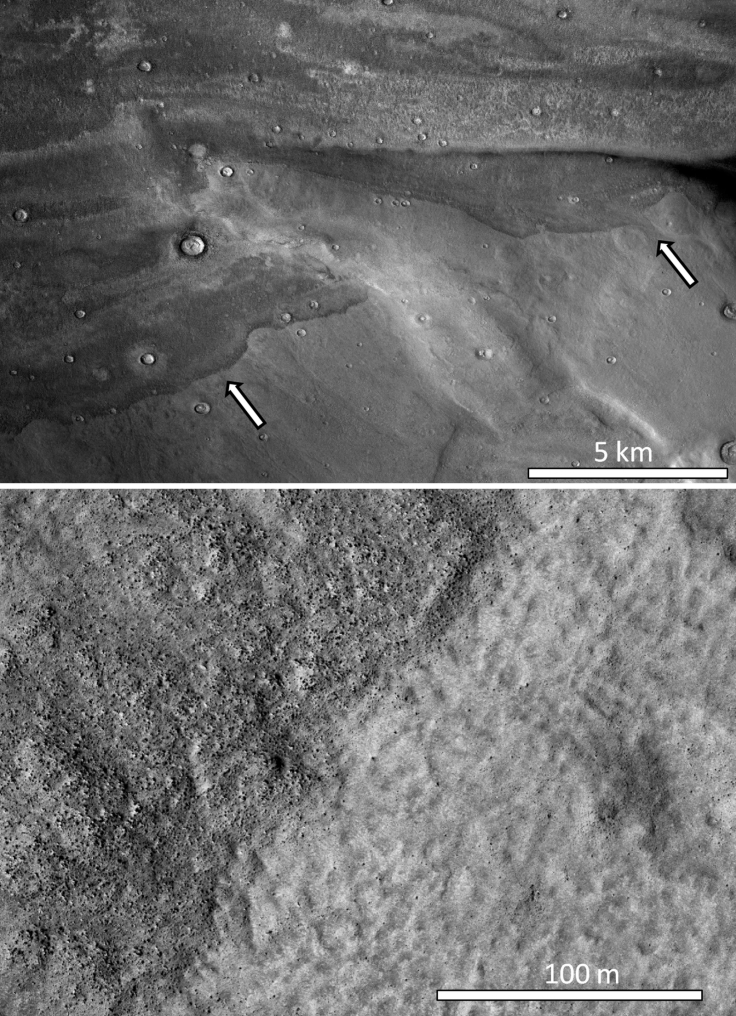Mega-tsunamis on Mars: Meteorite strikes caused 120m waves to inundate Red Planet
Two meta-tsunamis with waves up to 120m in height inundated Mars' northern planes billions of years ago, researchers have discovered. The tsunamis are believed to have been generated by meteorites impacting the planet's then vast ocean, creating 30km-wide craters and waves that would have travelled several hundreds of kilometres inland.
A team of researchers led by Alexis Palmero Rodriguez from the Planetary Science Institute in Arizona used geologic mapping to better understand the ocean that covered the northern Martian lowlands 3.4 billion years ago. It had previously been proposed that massive floods created this ocean, but without a definitive shoreline scientists could not test this hypothesis.
"Our discovery offers a simple solution to this problem; widespread tsunami deposits distributed within a wide range of elevations likely characterize the shorelines of early Martian oceans," Rodriguez said.

The study, published in the journal Scientific Reports, used geomorphic and thermal image mapping along with numerical analysis to test the researchers' idea. They said meteor impacts would have generated waves with an average height of 50m, but that could have reached up to 120m in some areas. These impacts would have taken place approximately three million years apart.
"About 3.4 billion years ago, a big meteorite impact triggered the first tsunami wave. This wave was composed of liquid water. It formed widespread backwash channels to carry the water back to the ocean," said Alberto Fairén, principal investigator of the study.
The time period separating the two tsunami events is important, researchers say. It saw the ocean level recede to create a lower shoreline and the climate became much colder and water would have turned to ice. When the second tsunami struck, it would have formed rounded lobes of ice.

"These lobes froze on the land as they reached their maximum extent and the ice never went back to the ocean – which implies the ocean was at least partially frozen at that time. Our paper provides very solid evidence for the existence of very cold oceans on early Mars," Fairén said.
He also said this cold, salty ocean would have been suitable for sustaining life: "In spite of the extremely cold and dry global climatic conditions, the early Martian ocean likely had a briny composition that allowed it to remain in liquid form for as long as several tens of millions of years. Subfreezing briny aqueous environments are known to be habitable environments on Earth, and consequently, some of the tsunami deposits might be prime astrobiological targets.
"Cold, salty waters may offer a refuge for life in extreme environments, as the salts could help keep the water liquid. ... If life existed on Mars, these icy tsunami lobes are very good candidates to search for biosignatures."
© Copyright IBTimes 2025. All rights reserved.






















